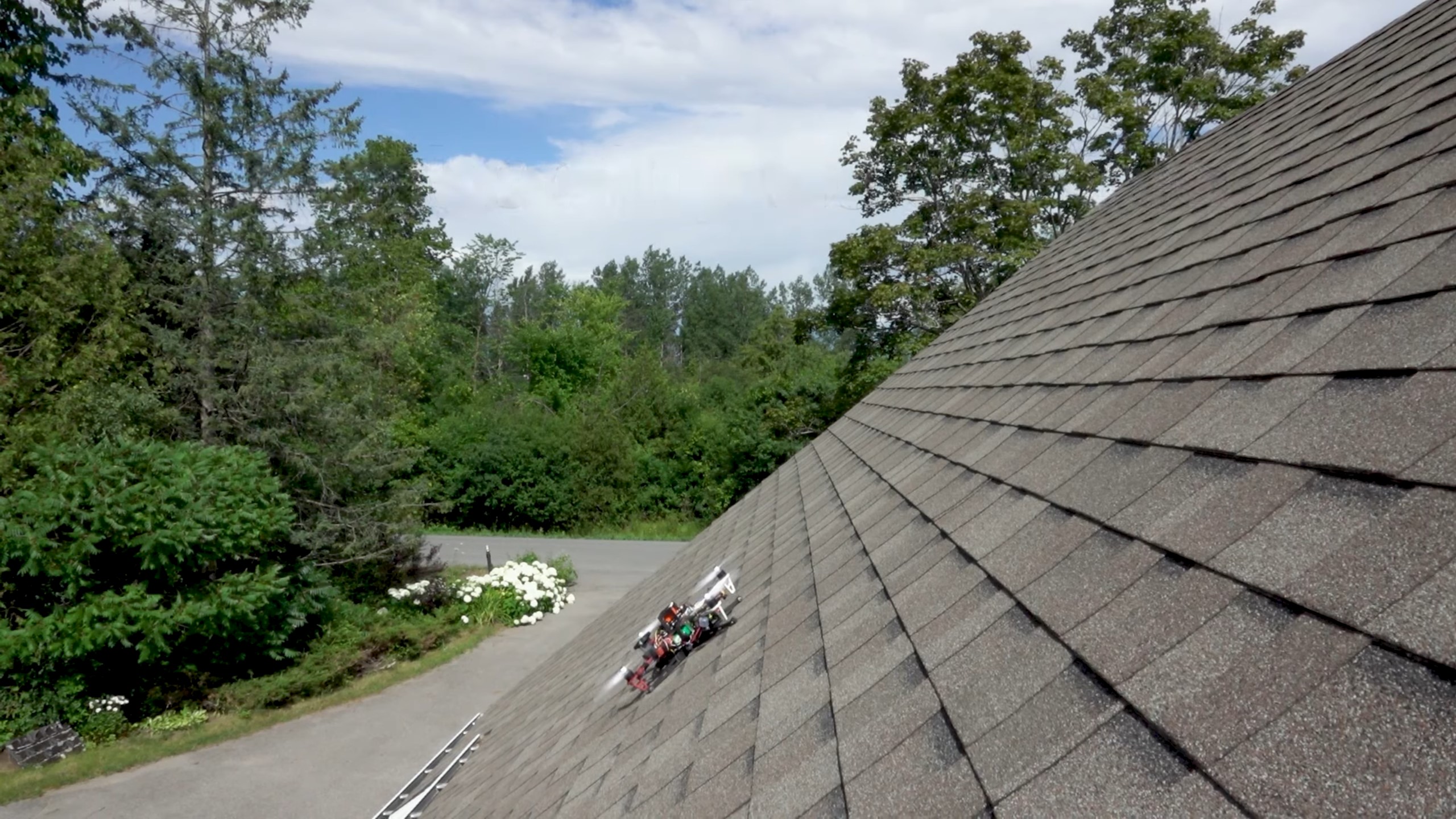Located in Canada, in the Province of Quebec, the University of Sherbrooke is a French-speaking institution that offers drone courses and the opportunity to research various drone-related subjects. In the last few years, Sherbrooke's mechanical engineering students have completed, and published, two master's theses focusing on drone landings on inclined surfaces.
In 2020, mechanical engineering student John Bass completed his master's thesis on how to use reversible thrust to aid quadcopter landings on inclined surfaces. Drones are becoming less expensive, more versatile, and user-friendly thanks to advances in sensors, control, electric propulsion, and manufacturing. However, according to Bass, their landing envelopes remain limited to fixed horizontal and immobile surfaces due to multirotor rollover accidents caused by thrust redirection after initial contact.
To reduce these types of accidents, Bass considered various solutions, such as lowering the center of mass of a multirotor, designing a suspension that would integrate with the legs of the drone, or using adhesive tabs that stick to the landing surface. The final proposed solution, however, ended up being reversible thrust, a mechanism used to improve the maneuverability of different vehicles, such as ships approaching docks or manned aircraft that use it to brake more quickly and reduce the required landing distance. Additionally, "the use of reversible thrust does not require any mechanical modification to the multirotor, therefore offering a solution that can be implemented in all rotary-wing drones available on the market," Bass' thesis reads.
More recently, Createk, an innovation group led by mechanical engineers from the University of Sherbrooke—including Bass—published the "Adaptative Friction Shock Absorbers and Reverse Thrust for Fast Multirotor Landing on Inclined Surfaces" research paper. After testing Bass' reversible thrust solution, the drone could land on inclined surfaces of up to 25° at vertical impact speeds of up to 1 m/s. Still, the stiff and undampened nature of the landing gear limited further improvement. To fix that, the Createk group designed a landing gear prototype based on lightweight friction shock absorbers and implemented it on a DJI F450. Put together, the overall system enables drones to land safely on surfaces of up to 60° and at vertical speeds of up to 2.75 m/s. This increases the landing envelope by a factor of 8 compared to traditional multirotors, which are limited to surfaces around up to 10º at vertical speeds of up to 1.5 m/s.
Following trials will target complex landing situations, such as during high winds, rocky inclined terrain, rocking ships, and fast-moving vehicles. Another option is using carbon fiber landing gear to reduce the drone's weight and increase its rigidity to minimize the negative effects of bending the legs.




.png.small.400x400.png)











Comments